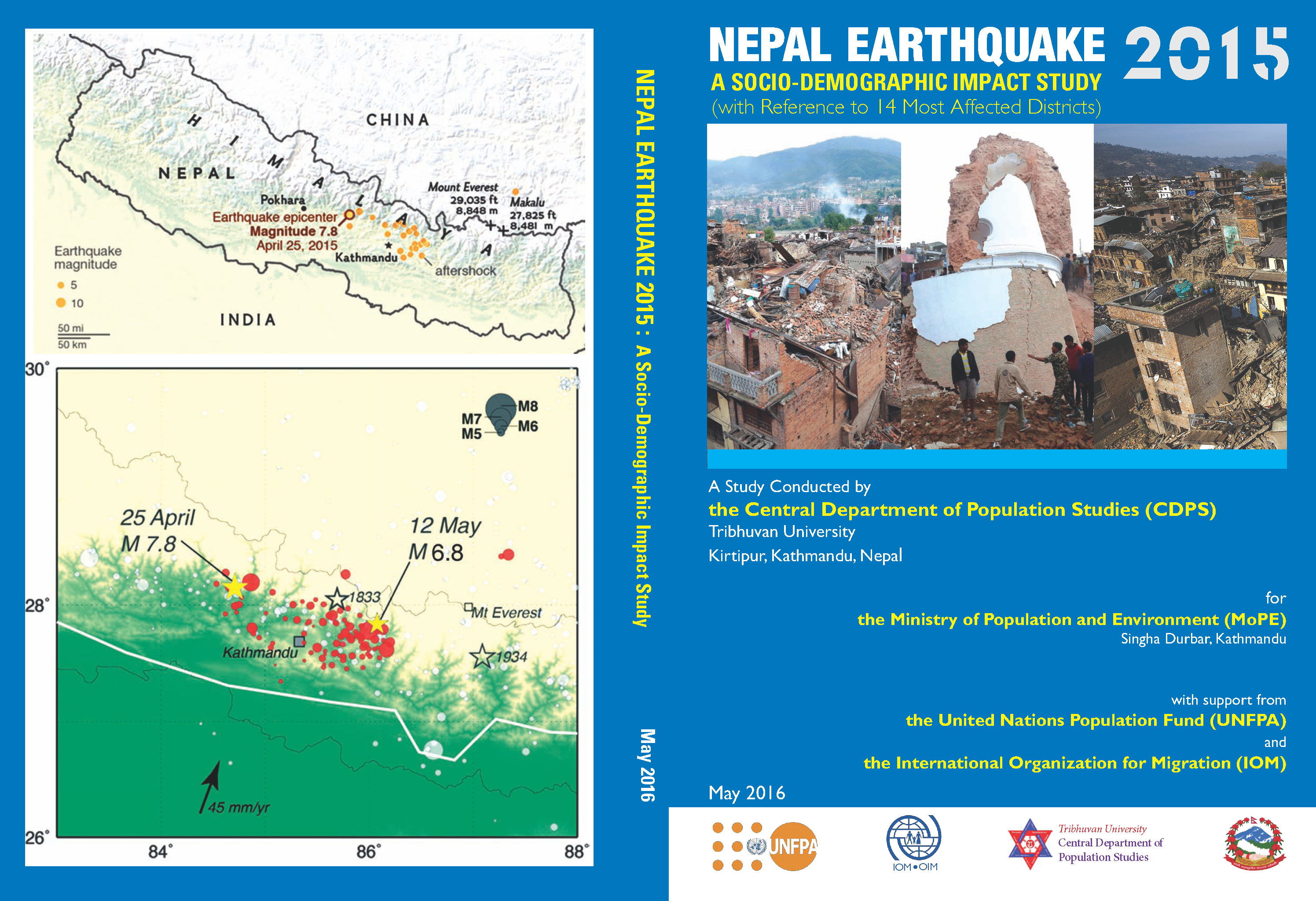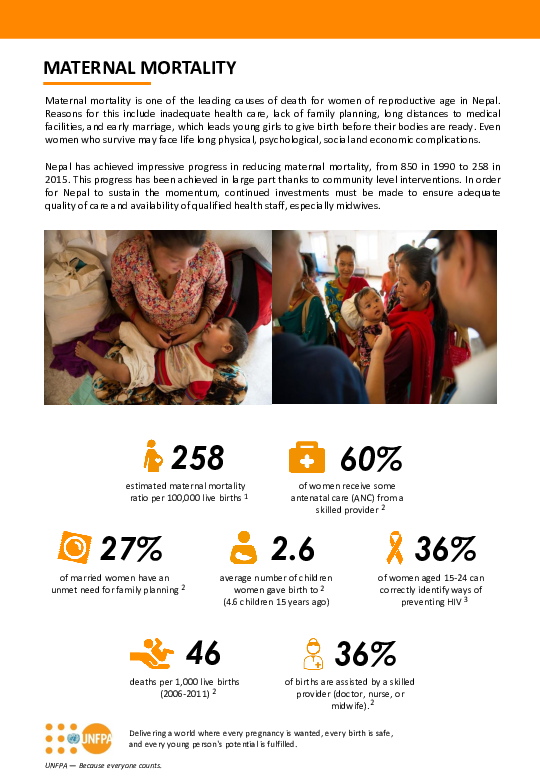You are here
New Releases
Integrated Training Package on Emergency Preparedness and Response for Rapid Response Team
Nepal is a disaster-prone country and faces various types of natural and manmade disasters, the most frequent natural disasters being floods and landslides. Nepal also lies in an earthquake-prone zone and the 2015 earthquake was a devastating one. All these disasters not only cause deaths and casualties, but also displace people and cause infrastructural damage. Keeping this in mind, this Integrated Training Package on Emergency Preparedness and Response for Rapid Response Team (RRT) was drafted to enhance the emergency response capacity of RRT members during any kind of disaster, crisis or emergency. This publication was prepared by the Epidemiology & Disease Control Division (EDCD) with technical and financial support from the United Nations Population Fund (UNFPA) and Nepal Red Cross Society (NRCS).
अब्स्टेट्रिक फिस्टुलाबारे जानकारी

Nepal Earthquake 2015: A Socio-Demographic Impact Study
Study on Selected Reproductive Health Morbidities among Women Attending Reproductive Health Camps in Nepal
These publications are a summary of the Study on Selected Reproductive Health Morbidities among Women Attending Reproductive Health Camps in Nepal and a presentation prepared for the 4th National Safe Motherhood Conference held in Kathmandu on 15 November 2016. The study aims to determine the prevalence of selected reproductive health (RH) morbidities, namely pelvic organ prolapse (POP), obstetric fistula, cervical cancer and human papillomavirus (HPV-types 16 and 18), among women of reproductive age groups (15-49 years) attending RH camps in the country. This cross-sectional study was carried out in 15 districts under the leadership of the Family Health Division, the Ministry of Health, with technical and financial support from UNFPA by Center for Molecular Dynamics Nepal.
The full report is available here.
Study on Selected Reproductive Health Morbidities among Women Attending Reproductive Health Camps in Nepal
This study aims to determine the prevalence of selected reproductive health (RH) morbidities, namely pelvic organ prolapse (POP), obstetric fistula, cervical cancer and human papillomavirus (HPV-types 16 and 18), among women of reproductive age groups (15-49 years) attending RH camps in Nepal. This cross-sectional study was carried out in 15 districts under the leadership of the Family Health Division, the Ministry of Health, with technical and financial support from UNFPA by Center for Molecular Dynamics Nepal.
My SDGs, My Responsibility
The Sustainable Development Goals (SDGs) is expected to shape the world’s common future for at least the next 15 years. With half of the world under the age of 30, it is crucial that young people are put at the forefront of change and development.
In Nepal, never before have there been so many young people. Right now Nepal has the largest productive youth population compared to the dependent population in its history. Therefore young people have the right to participate in decision-making processes at all levels. They have a crucial role to play in the implementation of the SDGs.
Because social change often starts with small individual steps, this booklet has been prepared to help young people in Nepal understand the SDGs and how the roles they plan can add up if they all do their part.

Fact Sheet: Child Marriage in Nepal
This fact sheet was prepared by UNFPA Nepal for the purpose of informing parliamentarians, policymakers, political parties, civil society leaders, development partners, women, young people and the general public.

Fact Sheet: Maternal Mortality in Nepal
This fact sheet was prepared by UNFPA Nepal for the purpose of informing parliamentarians, policymakers, political parties, civil society leaders, development partners, women, young people and the general public.
Fact Sheet: Obstetric Fistula in Nepal
This fact sheet was prepared by UNFPA Nepal for the purpose of informing parliamentarians, policymakers, political parties, civil society leaders, development partners, women, young people and the general public.
Fact Sheet: Comprehensive Sexuality Education in Nepal
This fact sheet was prepared by UNFPA Nepal for the purpose of informing parliamentarians, policymakers, political parties, civil society leaders, development partners, women, young people and the general public.